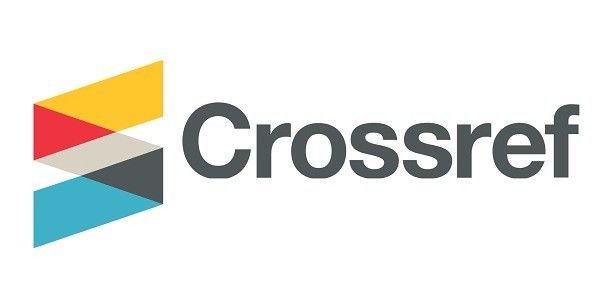Identifikasi Varietas Kacang Tanah Sandle Berdasarkan Karakter Morfologi pada Varietas Kacang Tanah Lokal di Kecamatan Haharu
Identification of Sandle Peanut Varieties Based on Morphological Characters in Local Peanut Varieties in Haharu Sub-District
DOI:
https://doi.org/10.30605/perbal.v10i1.1466Keywords:
Kacang tanah sandle, kacang tanah lokal, morfologi kacang tanahAbstract
Kacang tanah di Sumba Timur merupakan salah satu komoditas unggulan. Dari keunggulan yang dimiliki maka Dinas Pertanian Tanaman Pangan dan Holtikultura bersama peneliti dan pemuliaan dari Faperta Undana, Balai Pengkajian dan Penerapan Teknologi Pertanian NTT melakukan penilaian dan pelepasan varietas unggulan NTT kacang tanah lokal Kabupaten Sumba Timur untuk dilepas menjadi varietas nasional dengan nama Kacang Tanah Sandle dan pada 19 Mei 2009 melalui SK Mentan No : 2218/Kpts/SR. 120/5/2009 dilepas menjadi varietas unggul nasional dengan nama Kacang Tanah Sandle. Penelitian dilakukan di salah satu kebun petani Kelurahan Kambajawa. Sebanyak 4 varietas lokal kacang tanah yang digunakan dalam penelitian ini. Hasil penelitian menunjukkan adanya kesamaan morfologi antara kacang sandle dan kacang tanah lokal pada tipe pertumbuhan, warna batang, warna daun, warna bunga, waktu berbunga, ginofor, bentuk polong, bentuk biji, dan jumlah biji. Sedangkan pada warna biji sama sekali dari 4 varietas yang telah di amati tidak di temukan kesamaan dengan kacang tanah sandle.
Peanuts in East Sumba are one of the leading commodities. From these advantages, the Department of Agriculture, Food Crops and Horticulture together with researchers and breeders from Faperta Undana, Center for the Assessment and Application of Agricultural Technology in NTT conducted an assessment and release of superior varieties of NTT local peanuts in East Sumba Regency to be released into national varieties under the names Sandle Peanuts and Peanuts. on May 19, 2009 through the Decree of the Minister of Agriculture No: 2218/Kpts/SR. 120/5/2009 was released as a national superior variety under the name Peanut Sandle. The research was conducted in one of the farmer's gardens in Kambajawa Village. A total of 4 local varieties of peanuts were used in this study. The results showed that there were morphological similarities between sandle beans and local peanuts in the type of growth, stem color, leaf color, flower color, flowering time, gynophore, pod shape, seed shape, and number of seeds. Meanwhile, the color of the seeds from the 4 varieties that have been observed did not find any similarity with sandle peanuts.
Downloads
References
Dinas Pertanian Tanaman Pangan dan Hortikultura. (2009). Varietas Unggul Asal NTT “Kacang Tanah Sandle”. Pemerintah Kabupaten Sumba Timur.
Kasno A. (2005) . Profil dan Perkembangan Teknik Produksi Kacang Tanah di Indonesia. Makalah Seminar. Seminar Rutin Puslitbang Tanaman Pangan. Bogor.
Ndjurumanna. (2020). Morfologi Kacang Tanah Varietas Lokal, Sumba Timur.
Ndjurumanna. (2021). Morfologi Kacang Tanah Varietas Lokal, Sumba Timur.
Pitojo, S. (2005). Benih Kacang Tanah. Kanisius. Yogyakarta. 75 hlm.
Respati, E, L. Hasanah, S. Wahyuningsih, Sehusman, M. Manurung, Y Supriyati, dan Rinawati. (2014). Kacang tanah. Buletin Konsumsi Pangan Pusdatin (Pusat Data dan Sistem Informasi Pertanian). Vol 5 (4) : 9-19. Keragaman Plasma Nutfah Kacang Tanah Berdasarkan Karakter Morfologi, Hasil dan Kadar Minyak. Germ Plasm Diversity Of Groundnut Based On The Character Of Morphology, Result, and Oil Content.
Sukmadinata. (2006). Metode Penelitian Kualitatif. Graha Aksara. Bandung.
Trustinah. (2015). Morfologi dan Pertumbuhan Kacang Tanah. Balitkabi 40-59.
Downloads
Published
Issue
Section
License
In submitting the manuscript to the journal, the authors certify that:
- They are authorized by their co-authors to enter into these arrangements.
- The work described has not been formally published before, except in the form of an abstract or as part of a published lecture, review, thesis, or overlay journal.
- That it is not under consideration for publication elsewhere,
- That its publication has been approved by all the author(s) and by the responsible authorities – tacitly or explicitly – of the institutes where the work has been carried out.
- They secure the right to reproduce any material that has already been published or copyrighted elsewhere.
- They agree to the following license and copyright agreement.
License and Copyright Agreement
Authors who publish with Onoma Journal: Education, Languages??, and Literature agree to the following terms:
- Authors retain copyright and grant the journal right of first publication with the work simultaneously licensed under Creative Commons Attribution License (CC BY 4.0) that allows others to share the work with an acknowledgment of the work's authorship and initial publication in this journal.
- Authors are able to enter into separate, additional contractual arrangements for the non-exclusive distribution of the journal's published version of the work (e.g., post it to an institutional repository or publish it in a book), with an acknowledgment of its initial publication in this journal.
- Authors are permitted and encouraged to post their work online (e.g., in institutional repositories or on their website) prior to and during the submission process, as it can lead to productive exchanges, as well as earlier and greater citation of published work.













